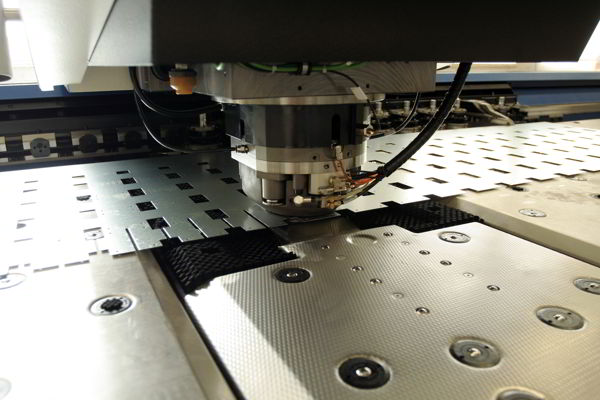
The fiscal health of healthcare facilities is contingent on a myriad of factors, one of which is billing practices. From insurance claims to patient payments, the billing procedures in place directly affect the profitability of healthcare facilities.
More than just a mere transactional process, billing is a complex procedure that involves adherence to regulations, accurate documentation, prompt claim submissions, and effective communication.
Crucial Aspects of Healthcare Billing Practices
Billing Accuracy
Billing accuracy is paramount in maintaining a profitable healthcare facility. Incorrect or incomplete billing can lead to claim denials or delays, translating into lower revenues and cash flow problems. Accuracy in billing implies that the healthcare facility has correctly coded the procedures, diagnoses, and other services rendered, in accordance with the International Classification of Diseases (ICD) system and Current Procedural Terminology (CPT).
Timely Submissions and Follow-ups
Timeliness is another vital component in healthcare billing. Delays in claim submission or follow-ups can significantly impact the cash flow and profitability of a healthcare facility. In some cases, insurers may even deny claims that are submitted past a certain deadline, which underscores the need for efficiency and speed in claim management.
Patient Communication and Education
Patients must understand their financial responsibilities for the care they receive. Effective communication regarding the cost of procedures, insurance coverages, and available payment plans can help prevent unpaid bills and foster a healthier revenue cycle. Also, an educated patient is less likely to dispute charges, leading to fewer instances of delayed payments and improving the overall profitability of the facility.
Impact of Billing Practices on Profitability
Direct Financial Impact
Billing practices have a direct impact on the financial health of healthcare facilities. Errors in coding, delayed submissions, or inefficient follow-ups can result in rejected or denied claims. Each denied claim is potential revenue lost, significantly affecting the bottom line.
Furthermore, inefficient billing practices can lead to an increase in ‘Days in Accounts Receivable’ (DAR). The longer the DAR, the more it negatively impacts the cash flow of the facility, as these are funds that could have been used for other operational costs or investments.
Impact on Patient Trust and Satisfaction
While the financial implications are often in the forefront, the non-financial impact cannot be undermined. Billing practices significantly influence patient trust and satisfaction. Unforeseen costs, erroneous billing, or complicated payment processes can lead to a decline in patient satisfaction levels. In an era where patient reviews and ratings can greatly influence a healthcare facility’s reputation, losing patient trust can lead to fewer patient visits, impacting profitability in the long run.
Best Practices for Profitable Healthcare Billing
Embrace Technology
Technology can help enhance billing practices, reduce errors, and improve overall efficiency. Automated billing systems and AI-enabled technologies can facilitate timely submissions, manage follow-ups, and ensure accurate coding.
Invest in Training
Continuous education and training of billing staff is critical. With constant changes in billing codes, regulations, and insurer requirements, investing in staff training can help prevent costly errors and delays.
Regular Auditing
Regular audits of the billing process can help identify inefficiencies, rectify errors, and streamline operations. By conducting regular audits, healthcare facilities can maintain their billing integrity, thereby ensuring profitability.
Software and the Streamlining of Revenue Cycle Processes
The introduction of software solutions has marked a significant shift in how healthcare facilities manage their revenue cycles, essentially redefining what Revenue Cycle Management (RCM) role for effective medical billing practices. These software applications automate numerous processes, simplifying complex billing procedures, and minimizing human error, thereby streamlining RCM operations.
Automated Billing and Coding
Software applications can automate billing and coding procedures, reducing the chances of errors. They come equipped with the most current ICD and CPT codes and automatically apply them based on the services rendered. This significantly reduces errors and speeds up the billing process.
Moreover, the software can also identify potential billing errors before claims are submitted, ensuring high accuracy levels. By alerting the healthcare facility to these discrepancies, it prevents claim denials and rejections due to coding errors.
Prompt Submissions and Follow-ups
Billing software can automate claim submission processes, ensuring claims are sent to the insurer promptly. The software tracks claim status and sends alerts for unpaid or rejected claims, facilitating timely follow-ups. It essentially reduces the ‘Days in Accounts Receivable’ (DAR), enhancing cash flow and profitability.
In addition, the software can track insurer payment deadlines and ensure claims are submitted well within the time limits, minimizing the chances of claim denial due to late submission.
Improved Patient Communication and Education
Software applications can also streamline patient communication. They can generate easy-to-understand billing statements, clarifying the charges for patients. Some software even provide online portals where patients can view their bills, ask questions, and make payments, thereby improving the patient experience and encouraging timely payments.
Direct Impact on Profitability
By reducing billing errors, ensuring timely claim submissions and follow-ups, and improving patient communication, software applications have a direct positive impact on the financial health of healthcare facilities. They enhance cash flow, improve profitability, and foster sustainable growth.
Indirect Impact on Patient Satisfaction
The impact of billing software extends beyond the financial aspects. By providing clear billing statements and easy payment options, software applications significantly enhance patient satisfaction. They foster trust and transparency, which can lead to higher patient retention rates, contributing to the long-term profitability of healthcare facilities.
Enhancing Profitability and Patient Satisfaction
The profitability of healthcare facilities is tied to various factors, and billing practices are undeniably at the core. By ensuring accurate, timely, and effective billing procedures, healthcare facilities can not only enhance their profitability but also improve patient satisfaction and trust, fostering sustainable growth in a highly competitive landscape. By embracing technology, investing in staff training, and conducting regular audits, healthcare organizations can elevate their billing practices and, consequently, their financial health.




Recent Comments